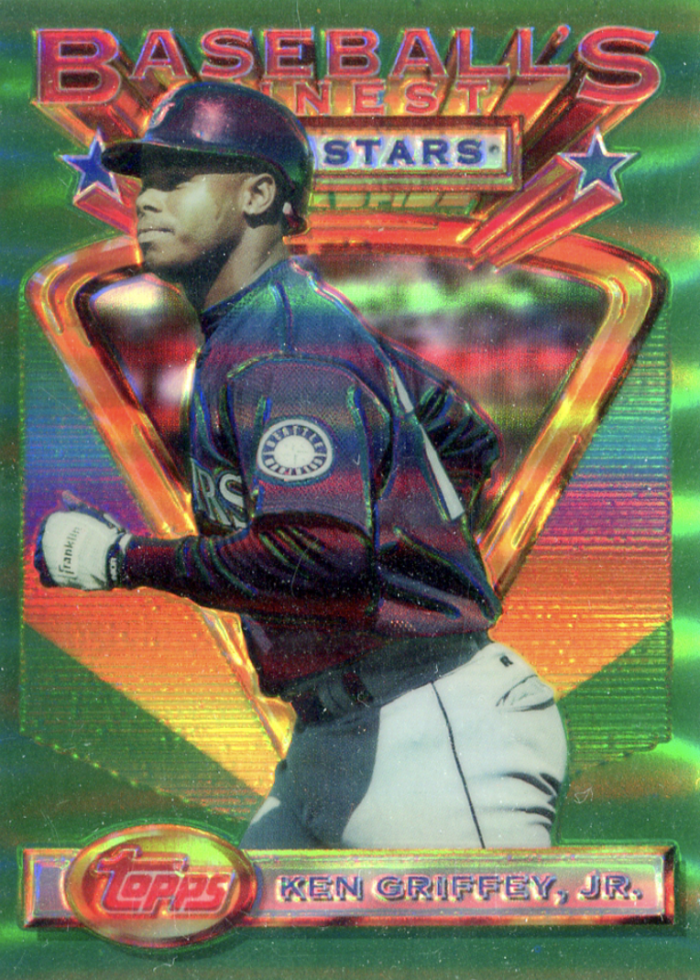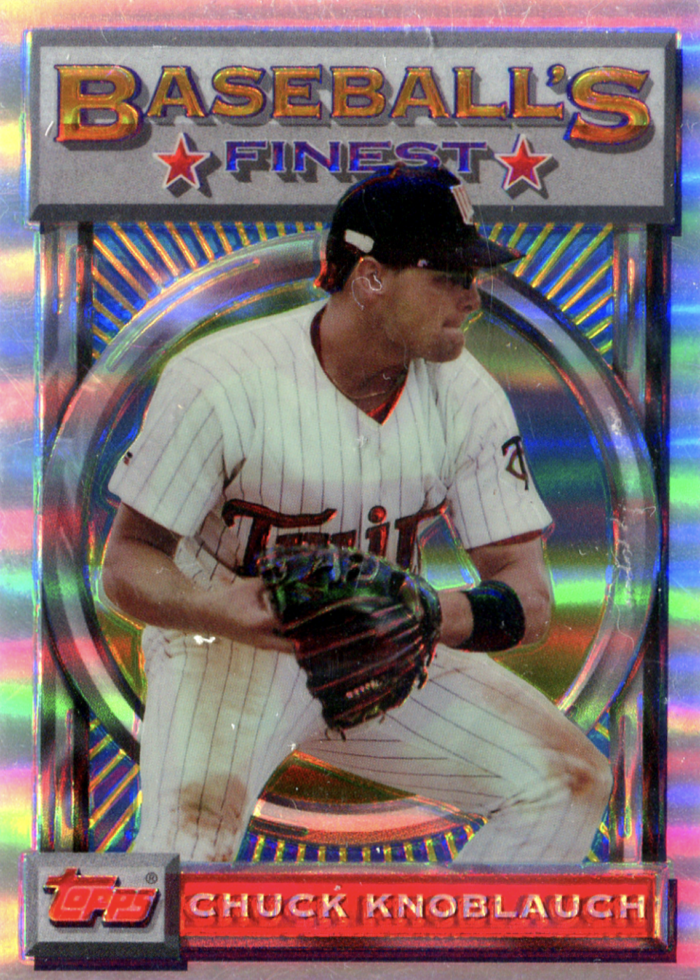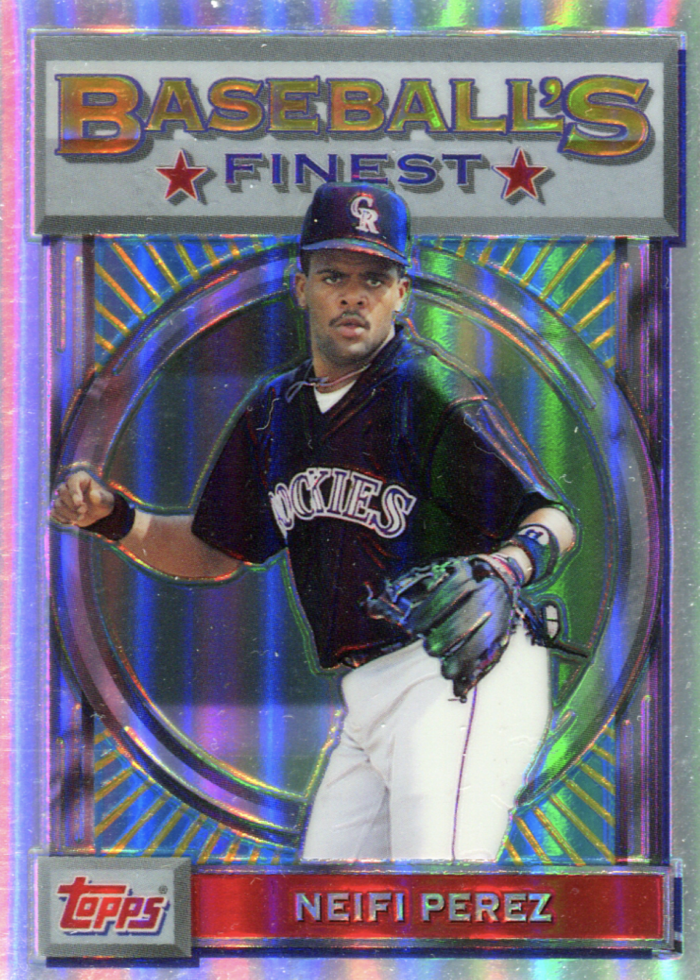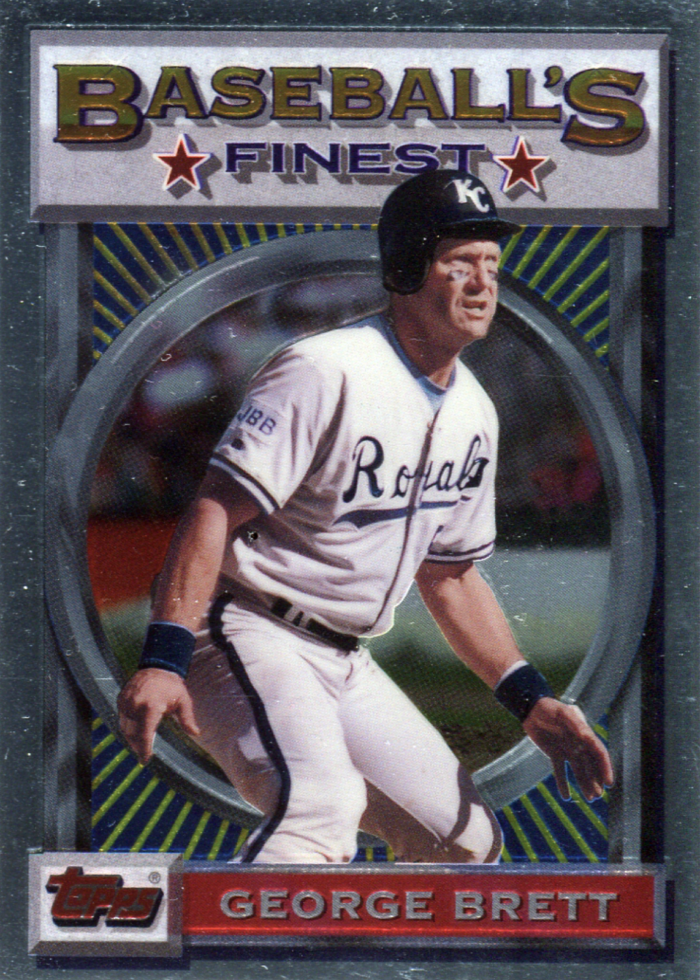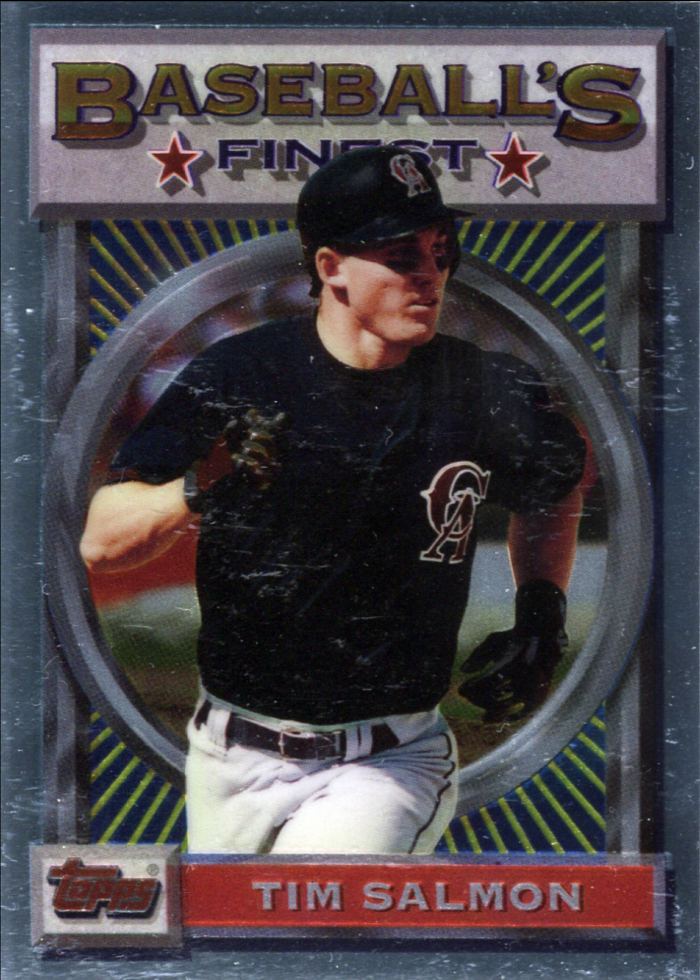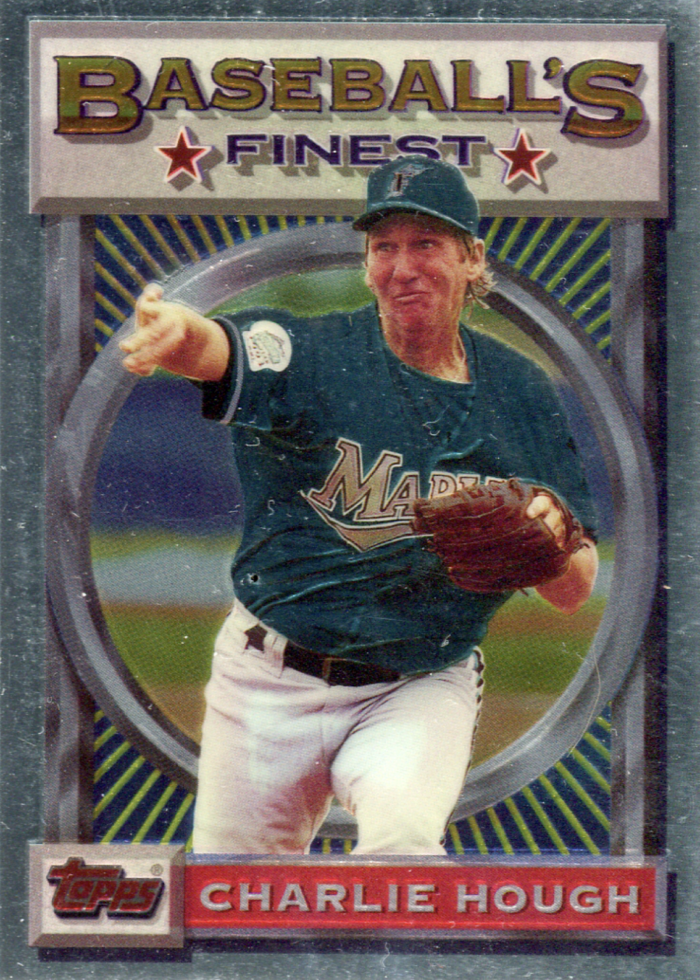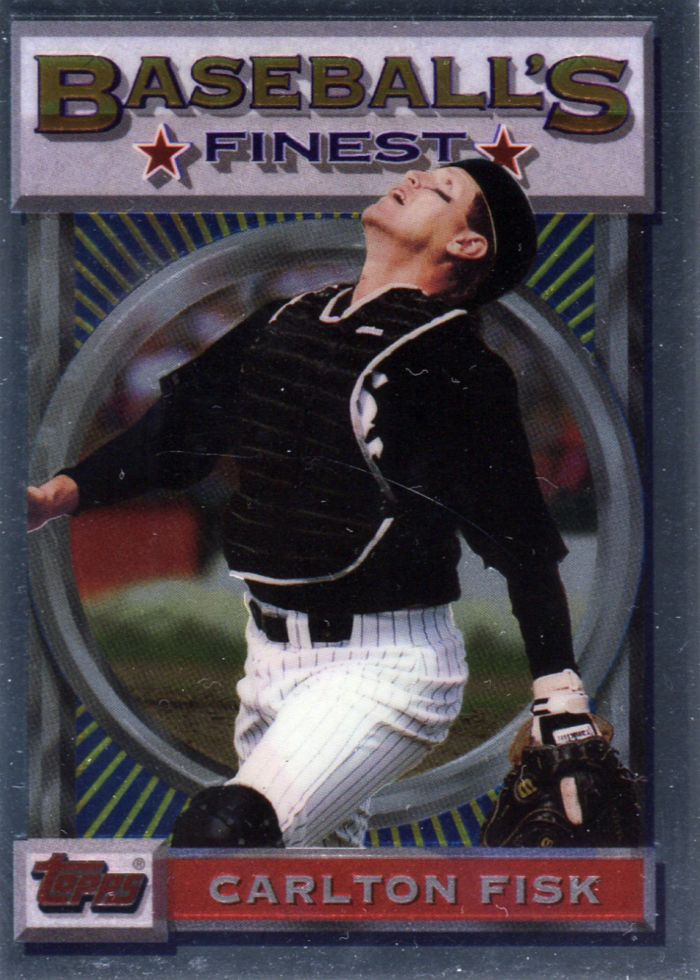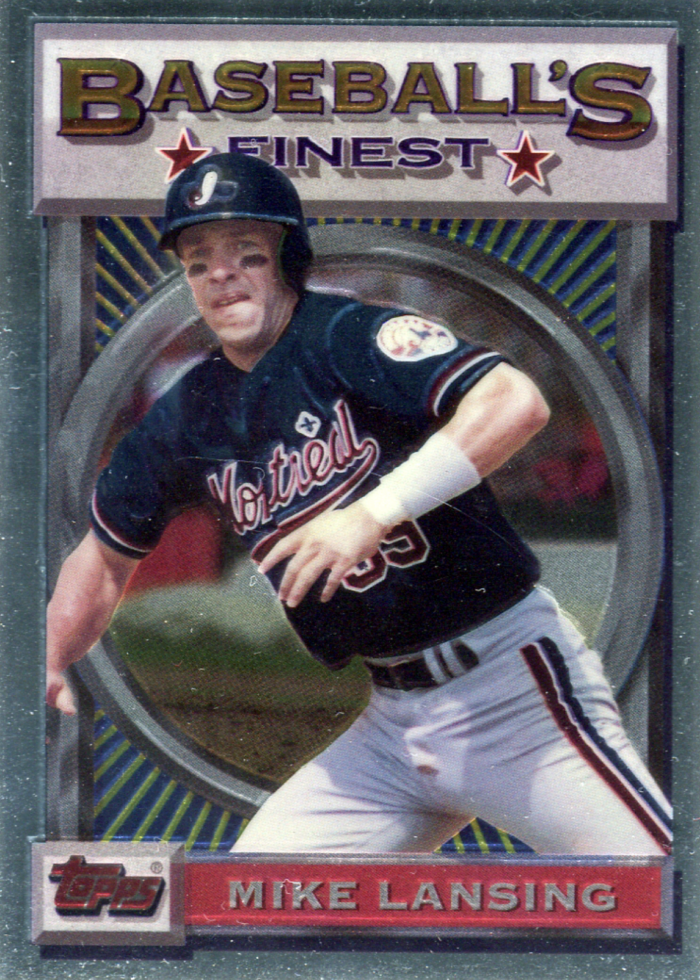
Topps Chrome® Tech History
All that glitters is Topps Chrome® Tech – at least, that has been the case ever since chromium card technology was introduced to the hobby in 1993. For collectors, Chrome Tech has boosted several celebrated Topps products’ look, value, and durability for the past 30 years. Even with the hypermodern market’s volatility, cards manufactured with Chrome Tech have overwhelmingly seen more stability in their value than those cards printed on the more traditional stock.
To mark 2023 Topps Chrome Baseball’s release, let’s look at Chrome Tech’s history, impact, and continued importance in the hobby.
Chrome Arrives
In the midst of the Junk Wax Era, Chrome Tech burst onto the hobby during the summer of 1993 with the landmark 1993 Topps Finest Baseball set. The concept for this iconic set was years in the making and a direct response to some innovations such as security foils and entirely glossy card backs being pushed out by competitor Upper Deck in the late ’80s. Through Chrome Tech, Topps began its journey into producing premium sets and creating the first Refractor parallels the hobby had ever seen.
1993 Topps Finest Baseball
The 1993 Topps Finest Baseball set – and the first use of Chrome Tech – kicked off a brand renaissance that has continued for the last three decades. After Chrome Tech began making annual appearances across a multitude of sets and products, innovations followed, including the introduction of autographs and relic cards; with this multi-set impact, Chrome Tech truly is the grandfather of modern hobby advancement, but it also continues to have a living legacy of its own.
For the current Topps Chrome Brand Manager, Aaron Abrams, the longevity of Chrome Tech’s appeal is directly connected to the cards’ tactile experience: “Overall, the [Chrome Tech] cards just look better. There is something to the shine. And, I mean, the sturdiness and thickness allow a better opportunity for the cards to grade higher in comparison to traditional paper cards. They [Chrome Tech] are just more durable.” And there is no doubt that as the years go by, grading becomes an essential part of the collector’s experience, as the process helps to quell concerns about the overproduction of any individual release. That satisfaction of holding a more physically sturdy card, along with the reflective nature that allows it to pop, not only translates directly to more consistent grading but also gives collectors the excitement of having such a quality product to engage with during the in-hand experience.

Chrome Variety
However, it’s not just the base Chrome Tech that has had a lasting impact on the hobby. While the concept of Chrome Tech has remained relatively similar year to year, the partner innovation of Chrome Tech Refractor parallels have continued to evolve alongside the trading card hobby. Abrams states, “The chrome tech stock naturally makes the cards pop, but the stock can also be manipulated to introduce an element of rarity.” The rarity he is referring to in this scenario is the rainbow of Refractor parallels that appear in any Chrome Tech-based set. Now with parallels, each player featured in the set has a deep catalog of variations that feature a rainbow of designs. While all of these parallels come with an element of rarity, the hierarchy ranges from unnumbered color refractors to the highly sought-after 1/1 SuperFractor that each card is treated to within a set.
With only so many colors visible to the human, new Chrome Tech parallels have had to get a bit more creative throughout the years as the market has continued to ask for further pushing of the envelope of what is possible. The two-plate parallel exemplifies one such elevation of the technology. This is the process where a base card is printed on Chrome Tech stock, but then designs can be overlaid on the borders of the cards. These designs might include things such as lightning strikes that can be found in recent Topps Chrome Stadium Club releases or even 2018 Topps Chrome UEFA Champions League.
Yet another use of the two-plate technology was introduced through the addition of carbon fiber aesthetics, where the print technology and color plates that come down on the edges of the card give the final product a 3D look. This same process has been used as the backbone in creating hypermodern sets such as Topps Chrome Black, which launched at the height of the most recent hobby boom in 2020.
Chrome to the Future
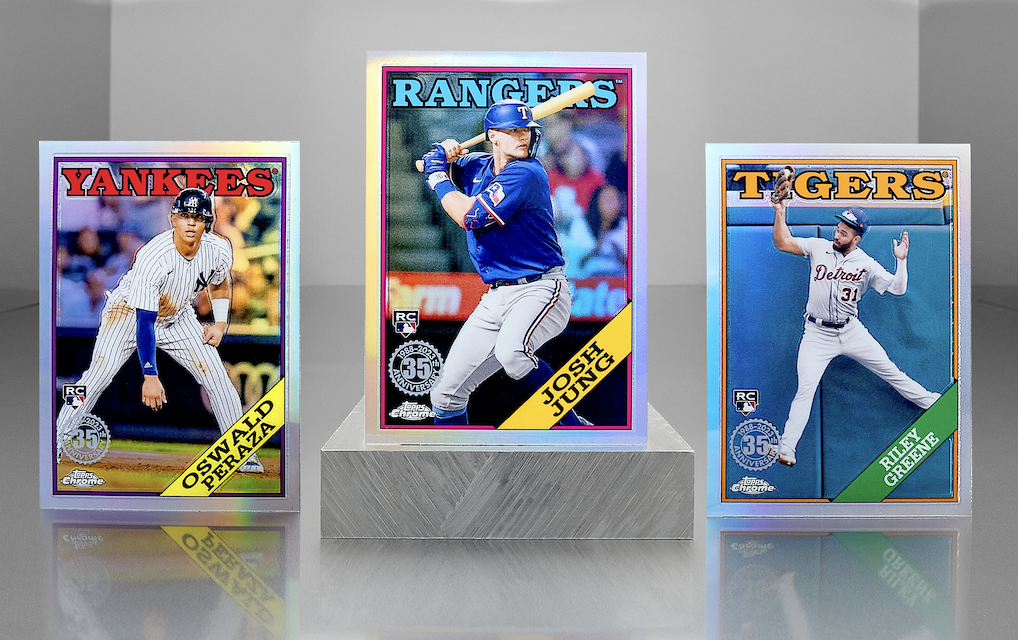
Even more recently, Topps has pushed the boundaries of what can be done with Chrome Tech. One such advancement comes in the form of etch cards. These etch cards bring a whole new way for players to jump off the two-dimensional piece of cardboard seemingly. In an etch card, a silvery lining is added around the player’s silhouette, giving the viewer the illusion of depth that is impossible to achieve on a traditional paper-stock card.
The hobby is in constant flux, and trends are constantly changing, whether it is a new player finally coming into their own and popping off in their sport or advancements in the technology that a player’s likeness is being printed on itself. While trading cards have a rich history dating back to the 19th century, and year after year, that history is honored and celebrated, there is no question that innovation has become deeply woven into the story of the hobby. And for modern collectors, no innovation has been more meaningful than Topps’s decision to introduce Chrome Tech in 1993.
If you need further proof of the importance of Chrome Tech, I will leave you with this final parting thought: in 2023, every licensed product that Topps creates has a flagship Chrome Tech product.
See all our 2023 Topps Chrome Baseball Coverage.
